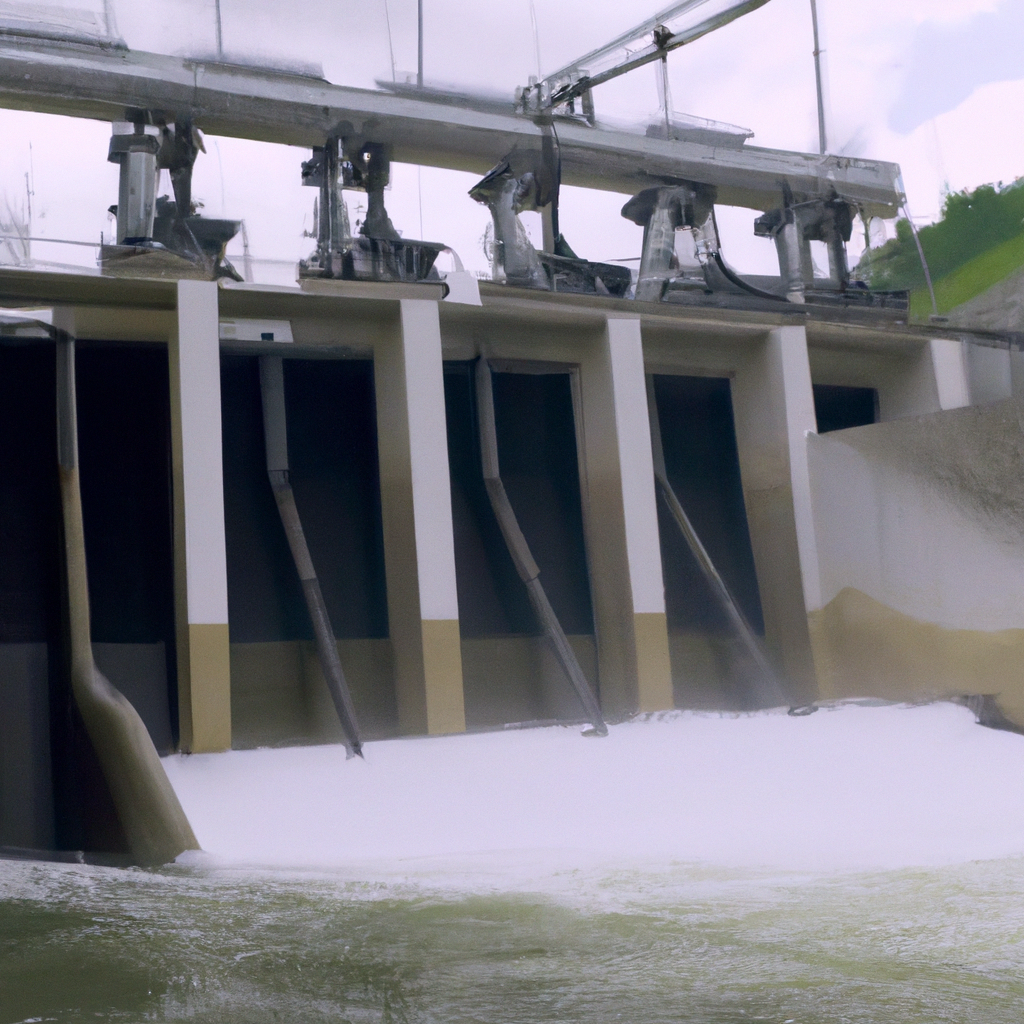Hydroelectric power plant is a renewable energy source that generates electricity through water power. It is a green energy option that has been in use for over a century. Hydroelectric energy accounts for almost 16% of the world’s electricity generation. The hydroelectric power plant harnesses the kinetic energy of water to produce electricity. In this article, we will discuss how a hydroelectric power plant works.
The Basics of Hydroelectric Energy Production
The energy production process in a hydroelectric power plant involves the following steps:
1. Water is collected from a river or a dam.
2. The water is then channeled through a turbine.
3. The turbine converts the kinetic energy of the water into mechanical energy.
4. The mechanical energy is then used to generate electricity.
Let’s take a closer look at each of these steps.
Water Collection
The first step in generating hydroelectric energy is to collect water. This can be done by building a dam across a river or by constructing a diversion canal. The water is then stored in a reservoir, which is usually located at a higher elevation than the power plant.
Turbine
The water is then channeled through a turbine. A turbine is a machine that has blades that spin when water flows through it. The spinning blades of the turbine convert the kinetic energy of the water into mechanical energy. There are two types of turbines that are commonly used in hydroelectric power plants:
– Impulse Turbine: This type of turbine is used when there is a high head of water. The water is directed onto the blades of the turbine, which spin and generate electricity.
– Reaction Turbine: This type of turbine is used when there is a low head of water. The water flows around the blades of the turbine, which spin and generate electricity.
Generator
The mechanical energy generated by the spinning blades of the turbine is then used to power a generator. A generator is a machine that converts mechanical energy into electrical energy. The generator consists of a rotor and a stator. The rotor is the rotating part of the generator, while the stator is the stationary part. The rotor is connected to the turbine, and when it spins, it generates an electrical current in the stator.
Transformer
The electrical current generated by the generator is then sent to a transformer. A transformer is a machine that is used to increase or decrease the voltage of the electrical current. The voltage of the electrical current is increased so that it can be transmitted over long distances without losing too much energy.
Transmission Lines
The electrical current is then sent to a substation, where it is distributed to the power grid. The power grid is a network of transmission lines that delivers electricity to homes and businesses.
Advantages of Hydroelectric Energy
Hydroelectric energy has several advantages over other forms of energy:
– Hydroelectric energy is a renewable energy source.
– Hydroelectric energy does not produce greenhouse gases or other pollutants.
– Hydroelectric energy is reliable and can be used to produce electricity consistently.
– Hydroelectric energy can be used to store energy, which can be used during peak demand periods.
Disadvantages of Hydroelectric Energy
Hydroelectric energy also has some disadvantages:
– Hydroelectric power plants can have a negative impact on the environment. The construction of dams can lead to the displacement of wildlife and the destruction of habitats.
– Hydroelectric power plants can also affect the water quality of rivers and streams.
– Hydroelectric power plants can be expensive to build.
Conclusion
Hydroelectric power plants are an excellent source of renewable energy. They generate electricity from water power, which is a clean and reliable source of energy. The process of hydroelectric energy production involves collecting water, channelling it through a turbine, converting the kinetic energy of the water into mechanical energy, using the mechanical energy to generate electricity, and transmitting the electricity to homes and businesses. Although hydroelectric power plants have some disadvantages, the advantages outweigh them. They are an excellent source of green energy and can be used to reduce the world’s dependence on fossil fuels.







